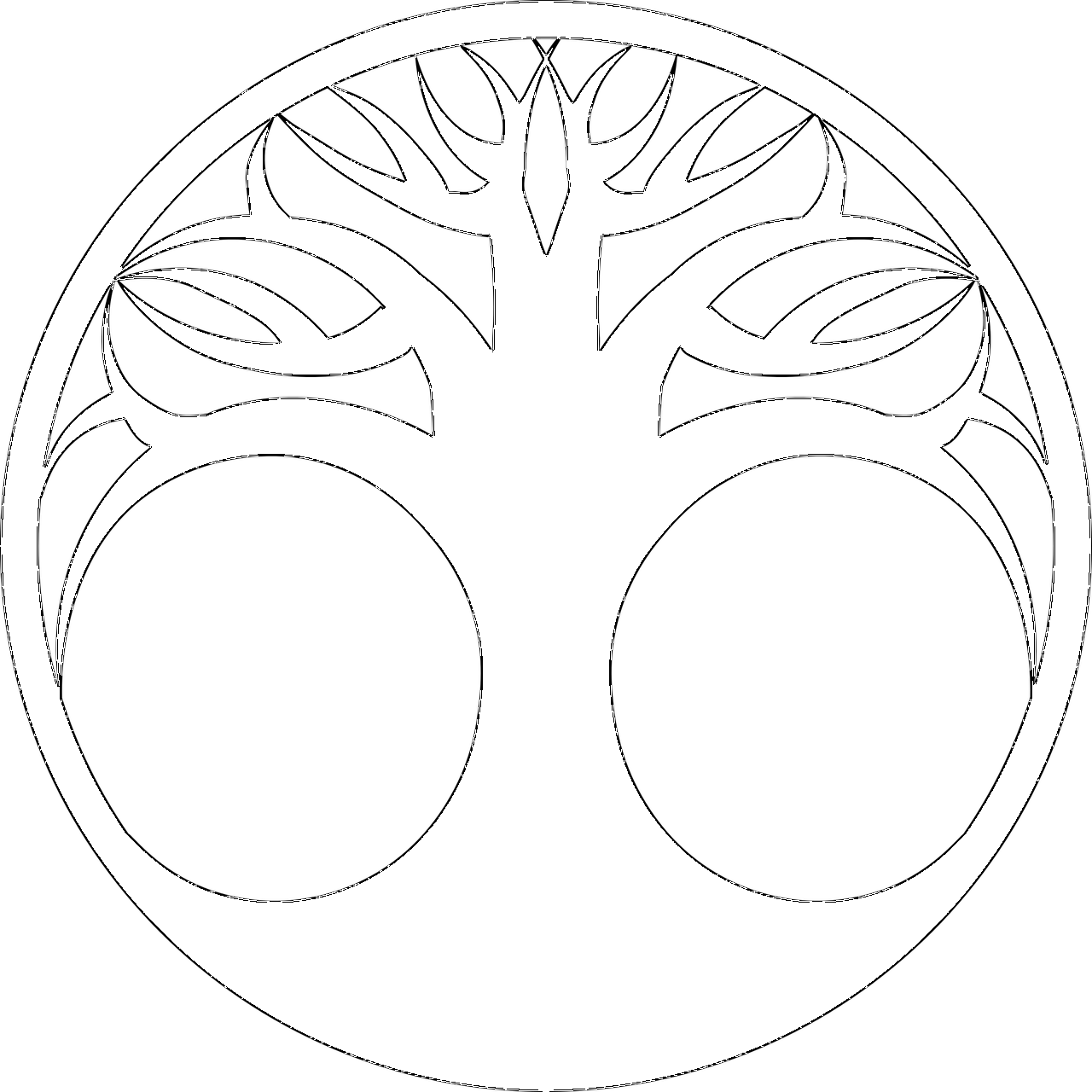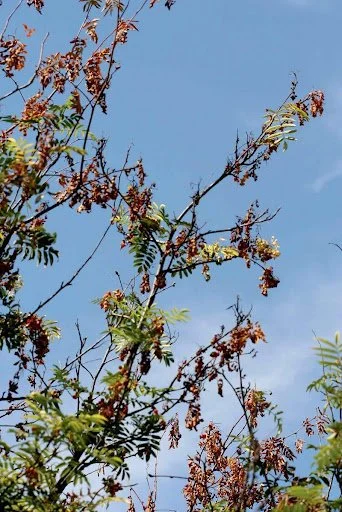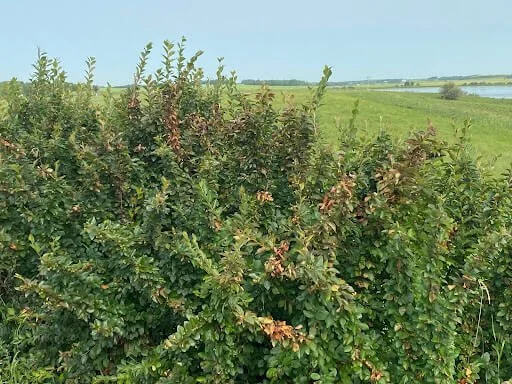Why Are My Apple, Mountain Ash, or Cotoneaster Branch Tips Turning Yellow and Dying?
Recognizing and Managing Fireblight in Ornamental Apples, Mountain Ash, and Cotoneaster in Cochrane
Have you noticed clusters of leaves turning yellow, curling, and drying out at the tips of your tree or hedge? Does it look like the bark is peeling off in places? Are entire sections of a shrub suddenly dying back?
These are often signs of Fireblight — a fast-spreading bacterial infection that affects many popular trees and shrubs in Cochrane and NW Calgary, especially ornamental apples, Mountain Ash, and cotoneaster hedges.
This disease can spread between different species, causing widespread damage if not caught early. But with the right approach, we can slow its progress and help trees recover.
What is Fireblight?
Fireblight is caused by the bacterium Erwinia amylovora. It enters through flowers, pruning wounds, or insect damage — usually in spring or early summer when the weather is warm and damp. Once inside, the bacteria travel through the tree’s vascular system, killing tissue as they go.
It affects a wide range of plants in the Rosaceae family, which means the disease can jump from apples to cotoneaster to Mountain Ash, especially when conditions are right.
How to Spot Fireblight in Cochrane’s Common Trees and Shrubs
Here are the main signs to watch for:
Yellowing and crusty leaves on branch tips
The most common early sign is leaf clusters turning yellow, especially at the ends of branches.
Affected leaves may curl slightly, feel dry or brittle, and cling to the branch even after dying.
Bark peeling or looking damaged
You might notice patches of loose, cracked, or peeling bark, often near the base of infected shoots or along small branches.
Affects apples, Mountain Ash, and cotoneaster
Fireblight targets many common landscape plants, including:
Ornamental and fruiting apple trees
Mountain Ash (rowan)
Cotoneaster hedges and shrubs
Crabapple and pear trees
Because these are all related species, the infection can move easily between them, especially if planted close together.
Dieback from the tips
Entire branch tips may begin to die back, usually starting in spring and worsening through summer.
In severe cases, entire limbs or shrubs may be lost if not pruned promptly.
Why It’s Happening
Fireblight thrives in stressed trees and shrubs. It’s not just a random infection — it often appears in plants that are already weakened by:
Overpruning or incorrect pruning timing
High-nitrogen synthetic fertilizers, which cause soft, vulnerable growth
Soil compaction or poor drainage
Low microbial activity in the root zone
Prolonged drought or root damage
Like many diseases, Fireblight is a symptom of deeper issues. Trees with balanced soil biology and healthy roots are far less likely to be infected — and more capable of recovery when they are. Research from experts like Dr. Thomas Dykstra supports the idea that pathogens are drawn to weakened plants emitting stress signals — not healthy ones.
Why Chemicals Won’t Help — and Might Make Things Worse
You can’t chemically spray your way out of Fireblight — and trying often backfires.
Antibiotic sprays or chemical fungicides may offer short-term suppression in commercial orchards, but they aren’t practical or effective in residential settings.
Synthetic fertilizers, especially those high in nitrogen, promote fast, weak growth that is more prone to infection.
Chemicals also damage the soil biology your plants rely on — reducing natural disease resistance and making your landscape more dependent on outside inputs.
What Can You Do Instead?
If you’ve spotted Fireblight symptoms on your apple, Mountain Ash, or cotoneaster, we recommend:
Tree & Shrub Health Consultations – We inspect all host species on your property, assess the infection, and give specific recommendations for pruning and prevention.
Targeted Pruning (and Proper Timing) – Infected branches must be pruned well below visible symptoms.
Organic Bioactive Treatments – Our foliar sprays and deep root inoculations restore microbial life and soil structure, giving your tree or hedge a chance to recover naturally and build real resistance.
A Regenerative Approach to Tree Health
At Cochrane Tree Care, we treat the whole system — not just the symptoms. Fireblight is a signal that something is off in your plant’s biology. Our goal is to correct that imbalance through organic treatments, structural pruning, and regenerative care.
We don’t fight nature — we help your trees work with it.
Take the Next Step
If you’re concerned about Fireblight or tree health in general, we’re here to help.
👉 Book a Tree Health Consultation – Spend 30–60 minutes with Kurt reviewing your trees, shrubs, yard, and treatment options.
👉 Explore Our Organic Tree Treatment Program – Four visits per year, starting at $399 for small properties, including foliar sprays and/or deep root injections.
👉 Request a Quote or Upload Photos – Quick form to help us understand your concerns.
About Kurt & Cochrane Tree Care
Kurt Stenberg is a regenerative arborist, permaculture practitioner, and certified arboriculture instructor with Arboriculture Canada. He also hosts the Arborist Blueprint Podcast, helping arborists across the world shift toward tree health-first practices.
At Cochrane Tree Care, we specialize in tree consultations, organic treatments, and sustainable solutions for long-term tree vitality.



